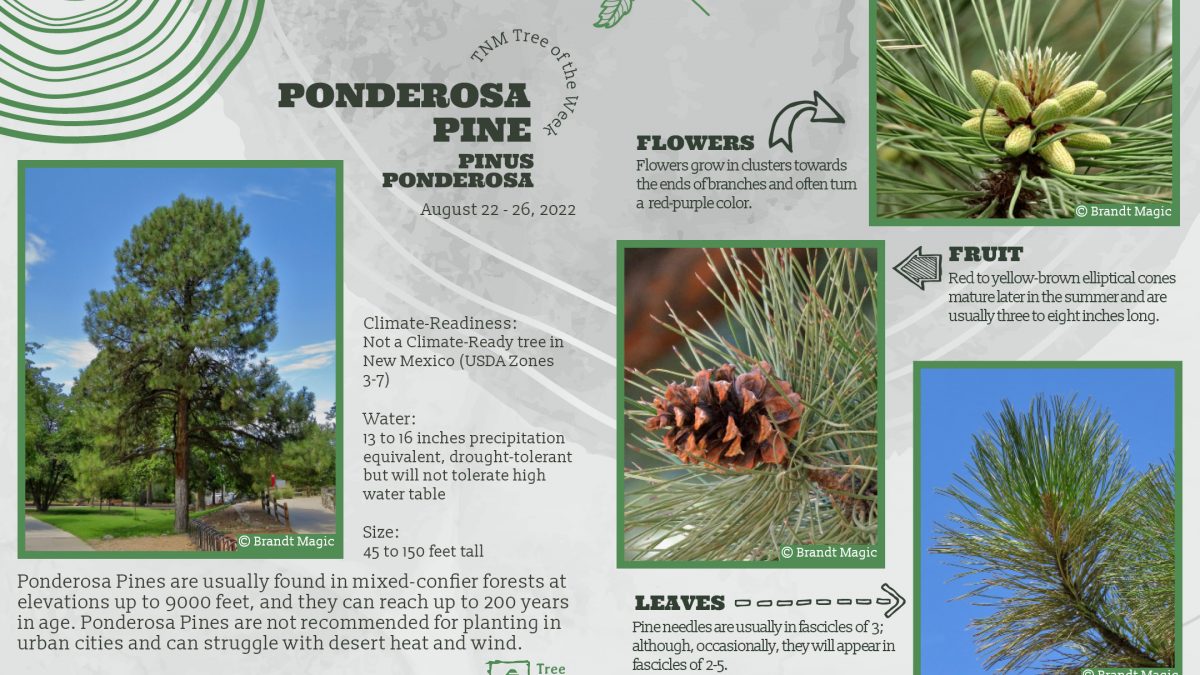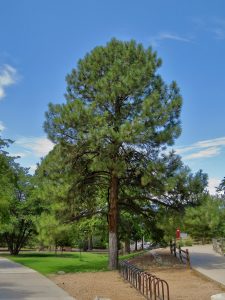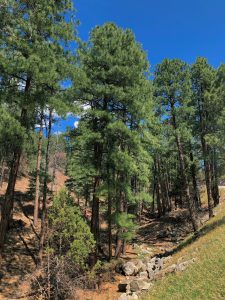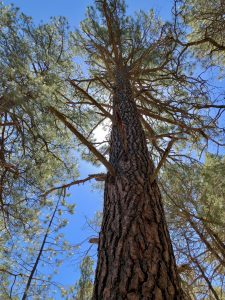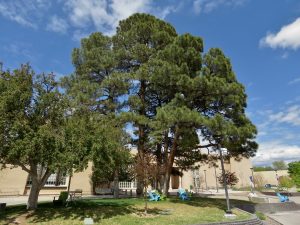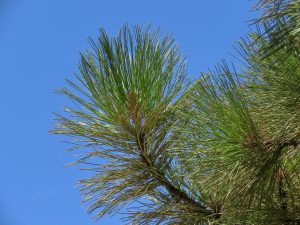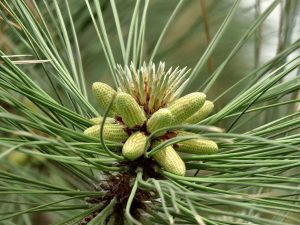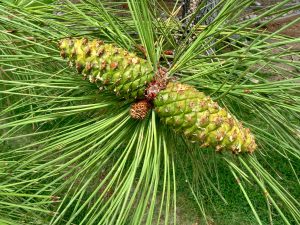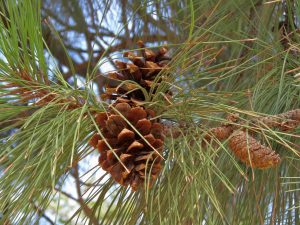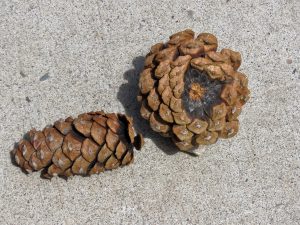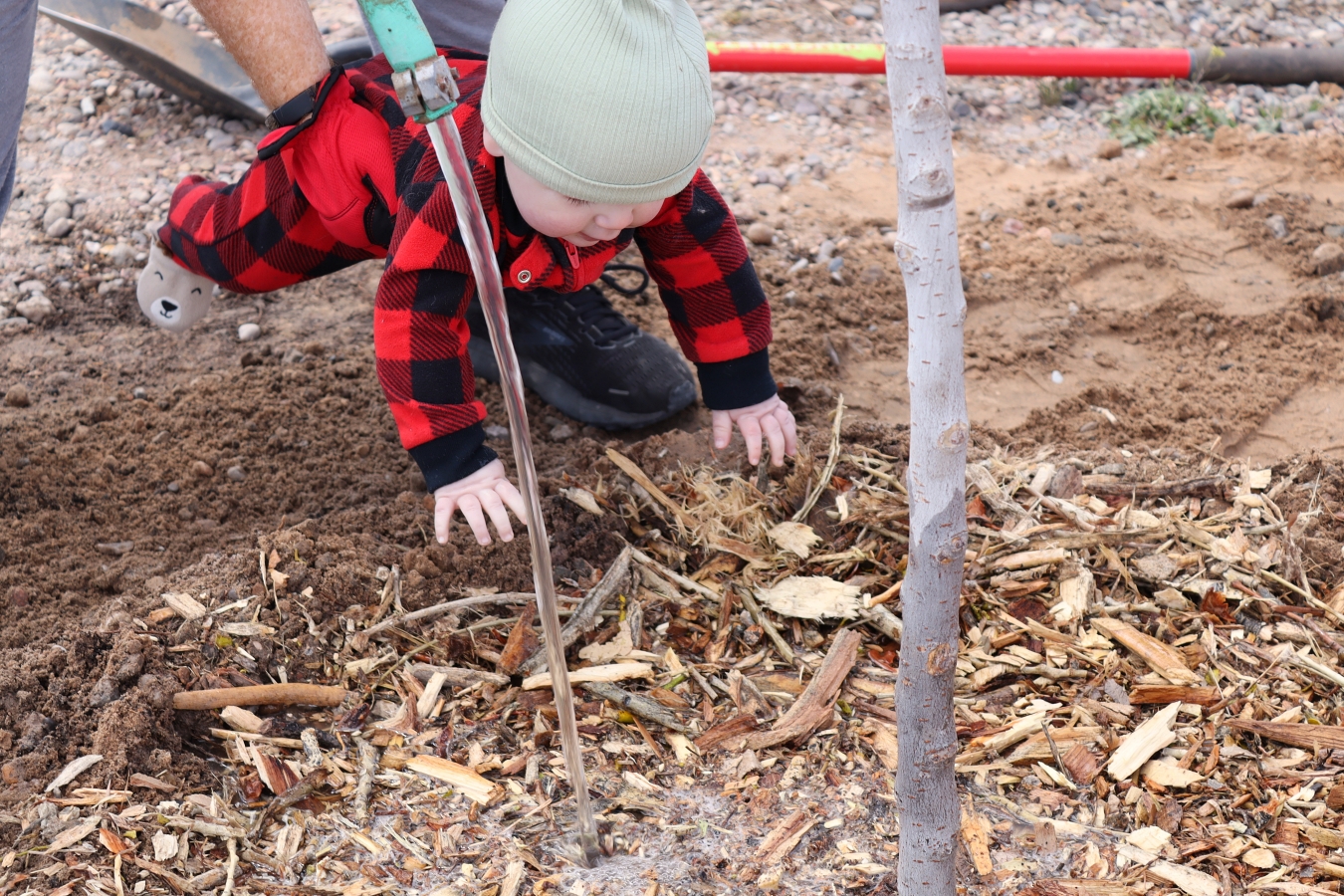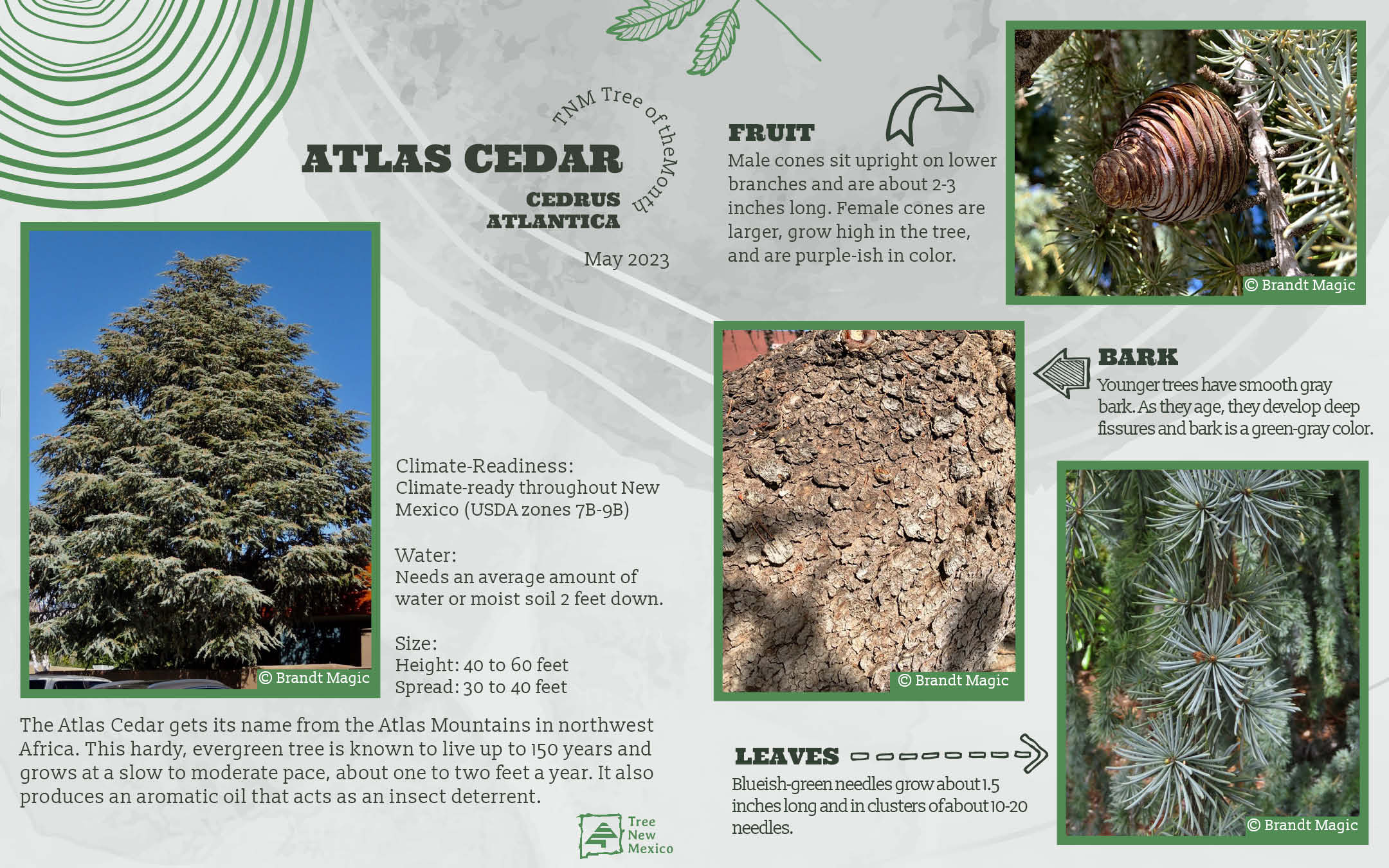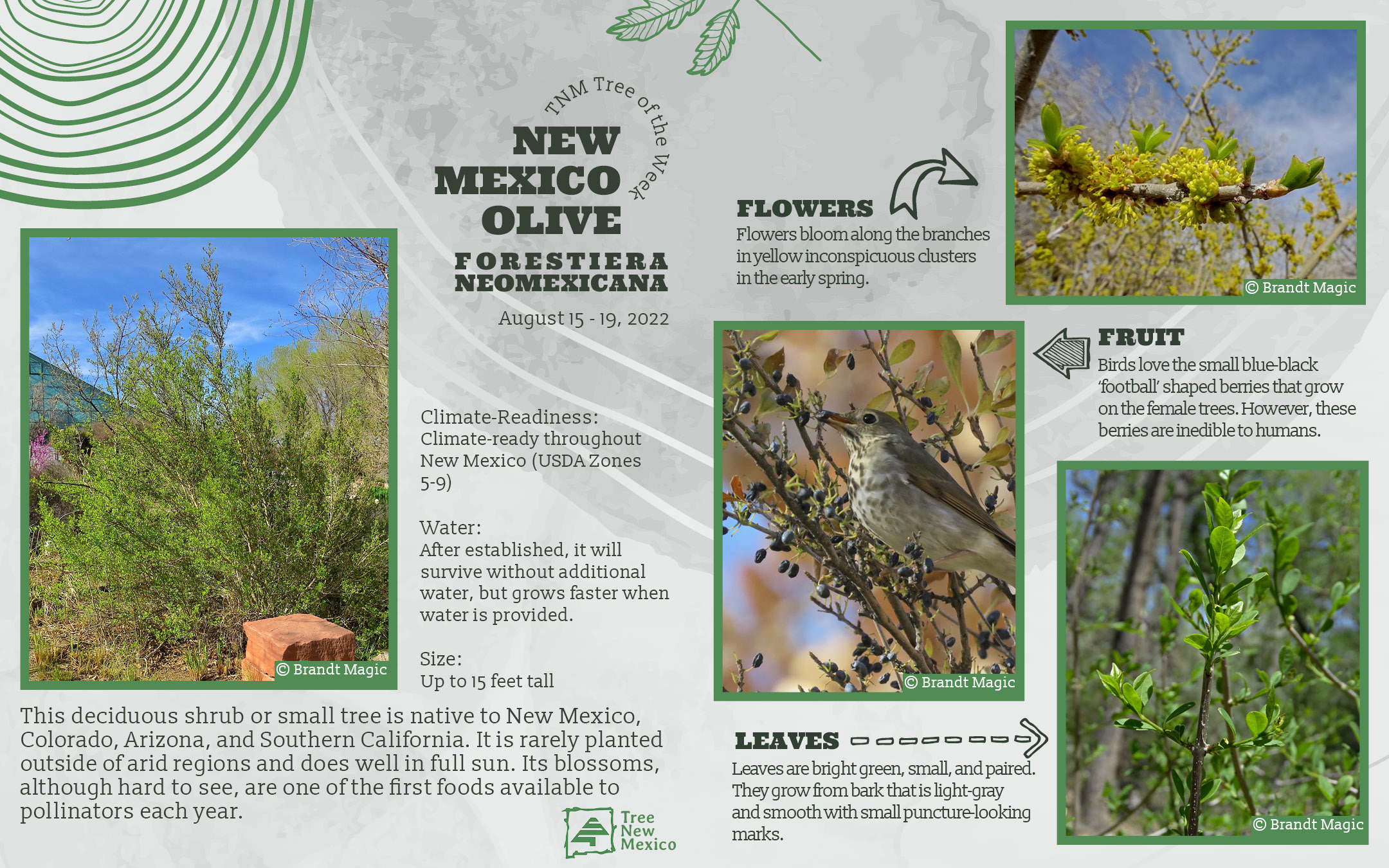
New Mexico Olive
August 15, 2022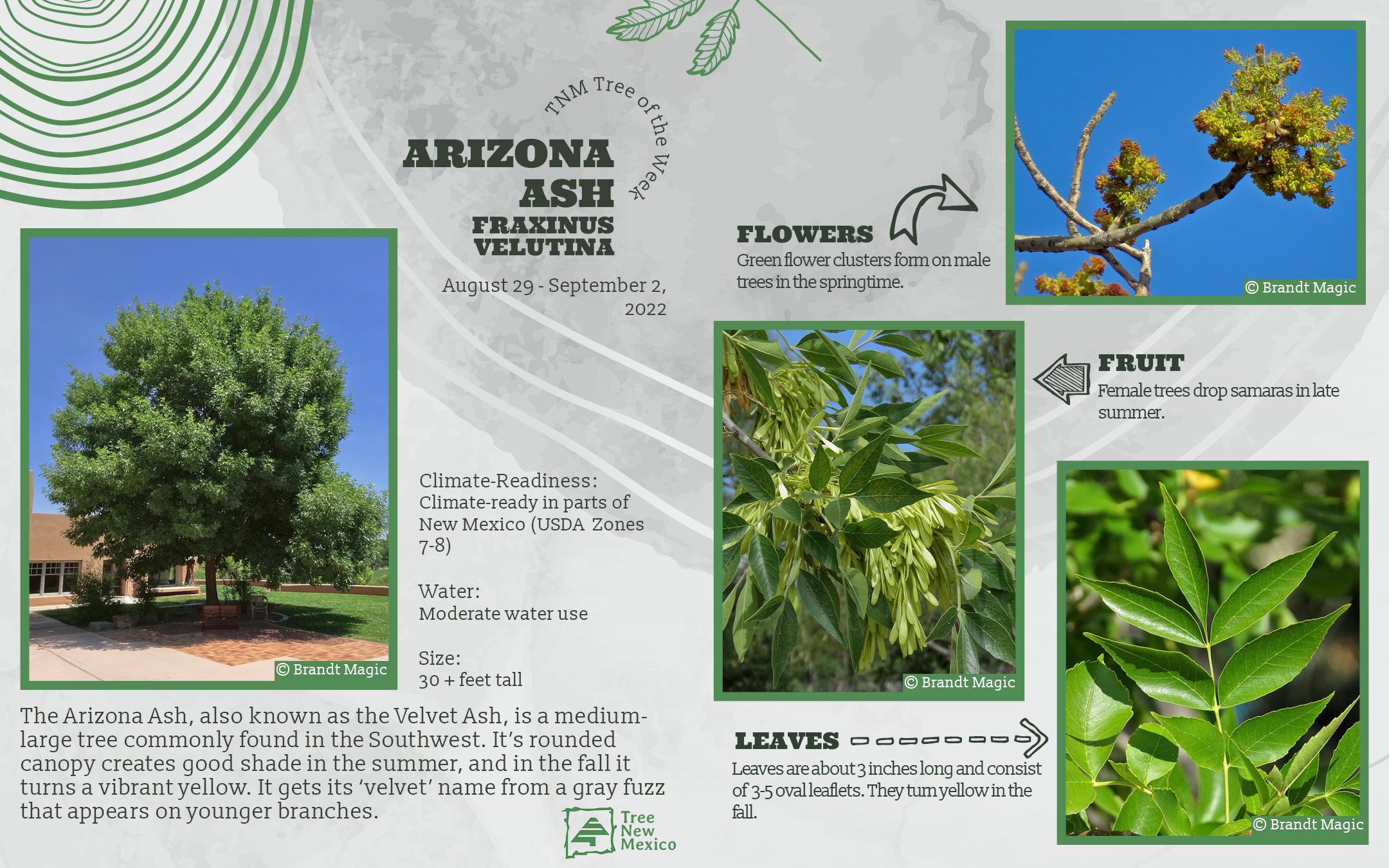
Arizona Ash
August 31, 2022Scientific names: Pinus ponderosa
Alternate Names: Western Yellow Pine, Blackjack Pine
Description: An evergreen, open-branched tree forming an open pyramid when young, becoming a short-conical head in age. It is native to western North America, adapted to well drained soils in Arizona and New Mexico. It occurs as dominant trees in mixed coniferous forests or as open pure stands. Ponderosa is intolerant to the heat and wind of the desert, but its adaptability and drought tolerance have brought it wide use in shelterbelts and ornamental plantings. It is moderately slow-growing, especially in early years, but is very long-lived. It has a root system with deep taproot, therefore is windfirm. However, a taproot would not exist in an urban landscape.
Cones: Reddish to yellow-brown elliptical cones, 3 to 8 inches long, scales thick at apex with a definite prickle.
Seeds/Flowers: winged, brown-purple.
Needles: In fascicles of 2 to 5 (usually 3)
Bark: Brown-black and deeply furrowed when young, becoming cinnamon red-brown, irregular plates in age, with a faint scent resembling that of vanilla.
Elevation: Up to 9,000 feet
Height: 45 to 150 feet
Climate-Ready Zones: Not a Climate-Ready tree in New Mexico. (Recommended planting in USDA Zones 3 to 7)
Water: 13 to 16 inches precipitation equivalent, drought-tolerant but will not tolerate high water table.
Uses: It is among the most important timber trees of the west. Its lumber is especially suited for window frames and panel doors. Also widely used as a landscape tree and as the central rows of windbreaks and screens.
Wildlife: Of some importance as food and cover for many birds and small mammals, occasionally including whitetail and mule deer. Chipmunks store the cones in caches, thus aiding dispersal.
Management and Care: There are no known serious disease or insect problems, although pine tip moth and mountain pine beetle could become serious pests. Not good in desert heat & wind.
- Ponderosa Pine (© Brandt Magic)
- Ponderosa Pine Bark (© Brandt Magic)
- Ponderosa Pine Bark (© Brandt Magic)
- Ponderosa Pine (© Brandt Magic)
- Ponderosa Pine Needles (© Brandt Magic)
- Ponderosa Pine Flowers (© Brandt Magic)
- Ponderosa Pine Cones (© Brandt Magic)
- Ponderosa Pine Cones (© Brandt Magic)
- Ponderosa Pine Cones (© Brandt Magic)

